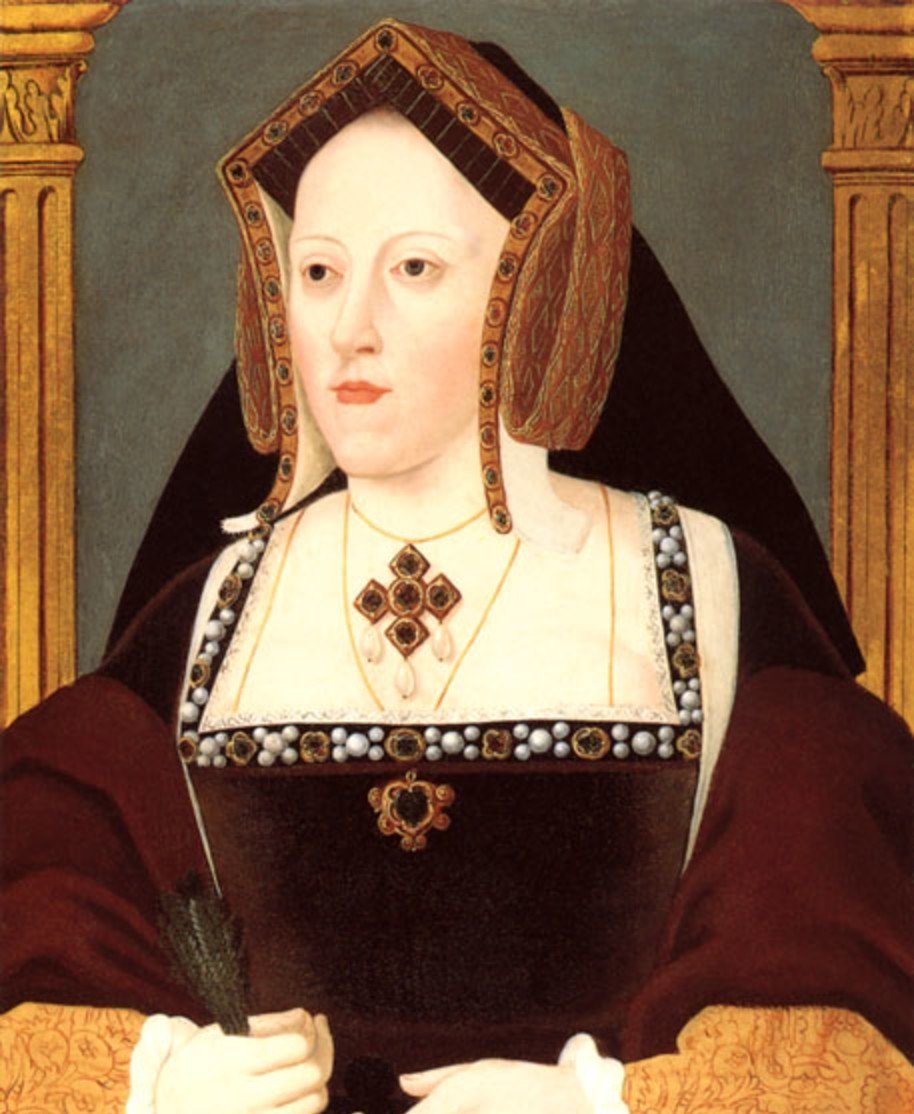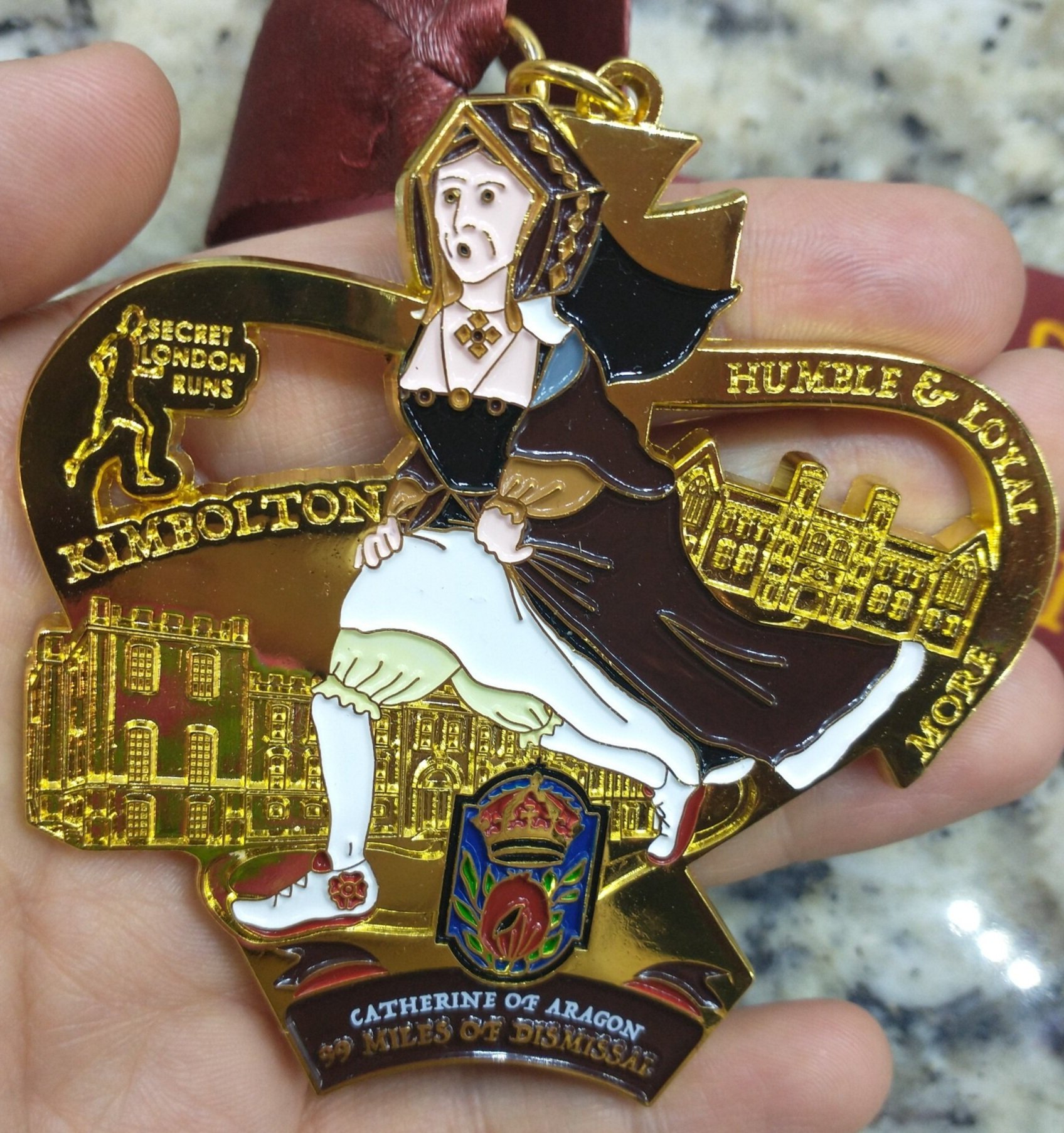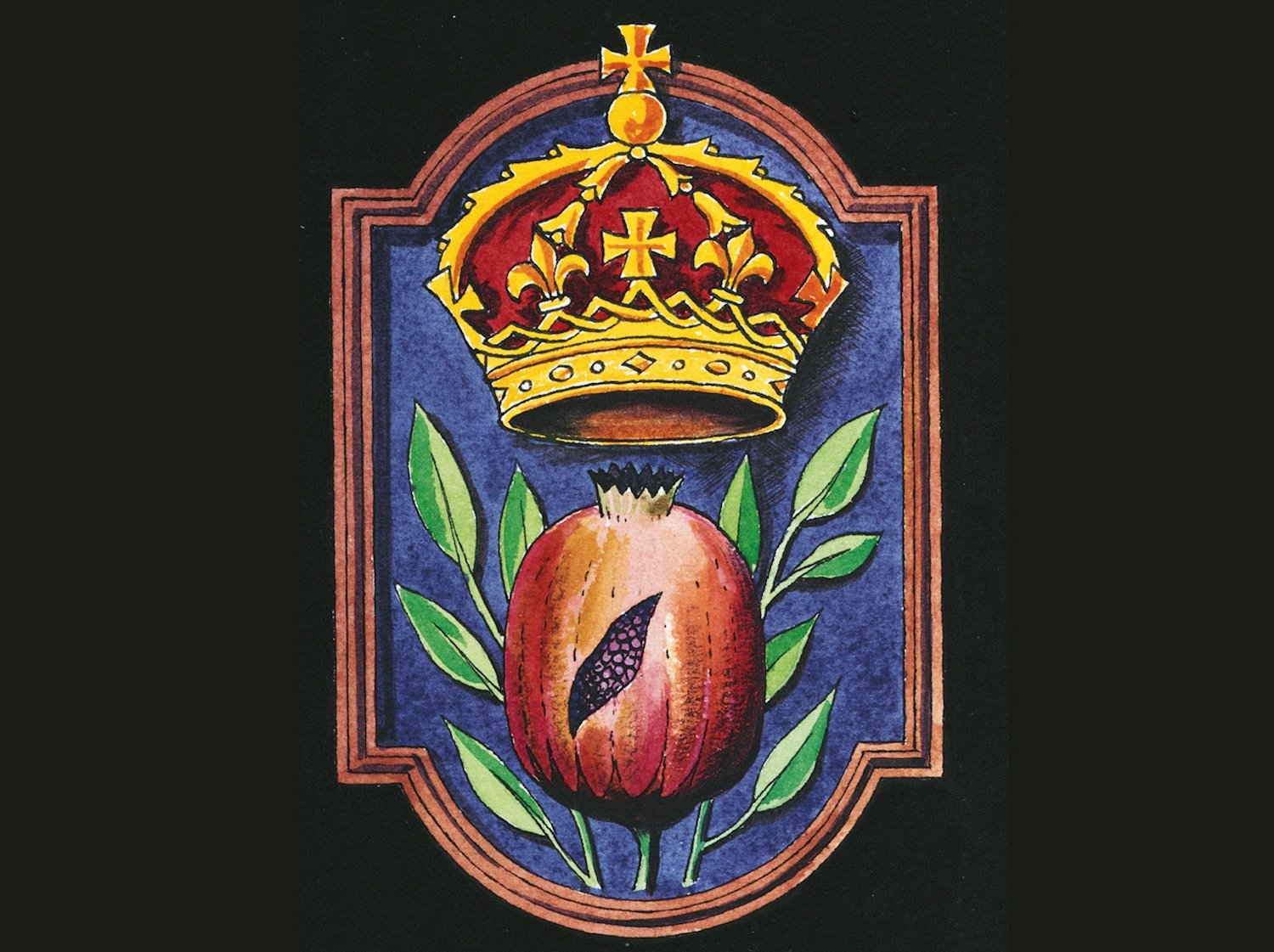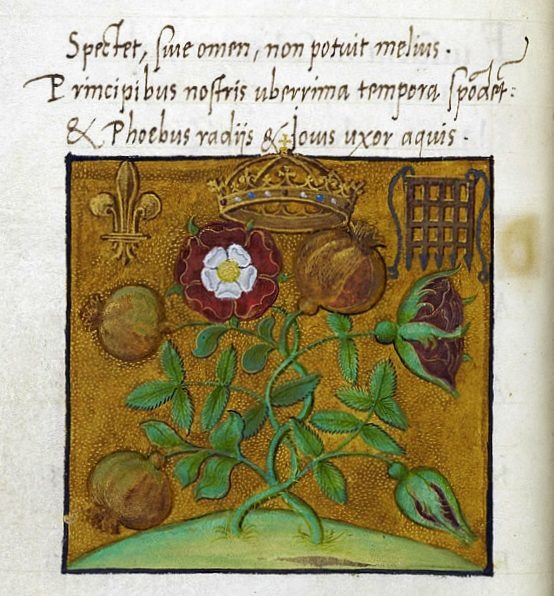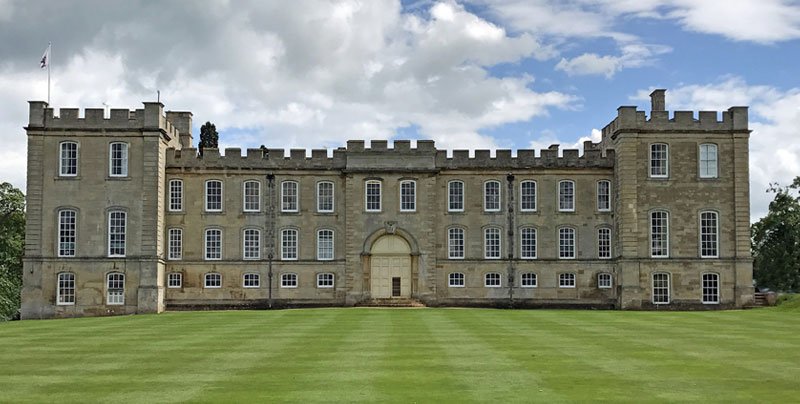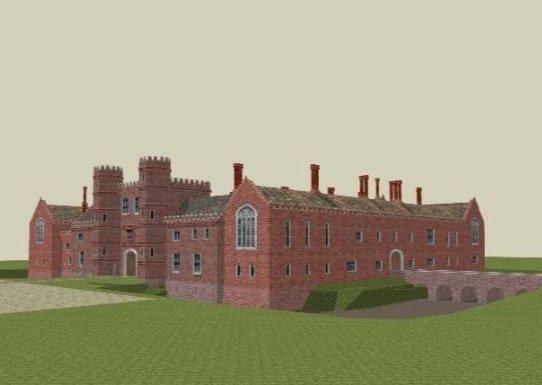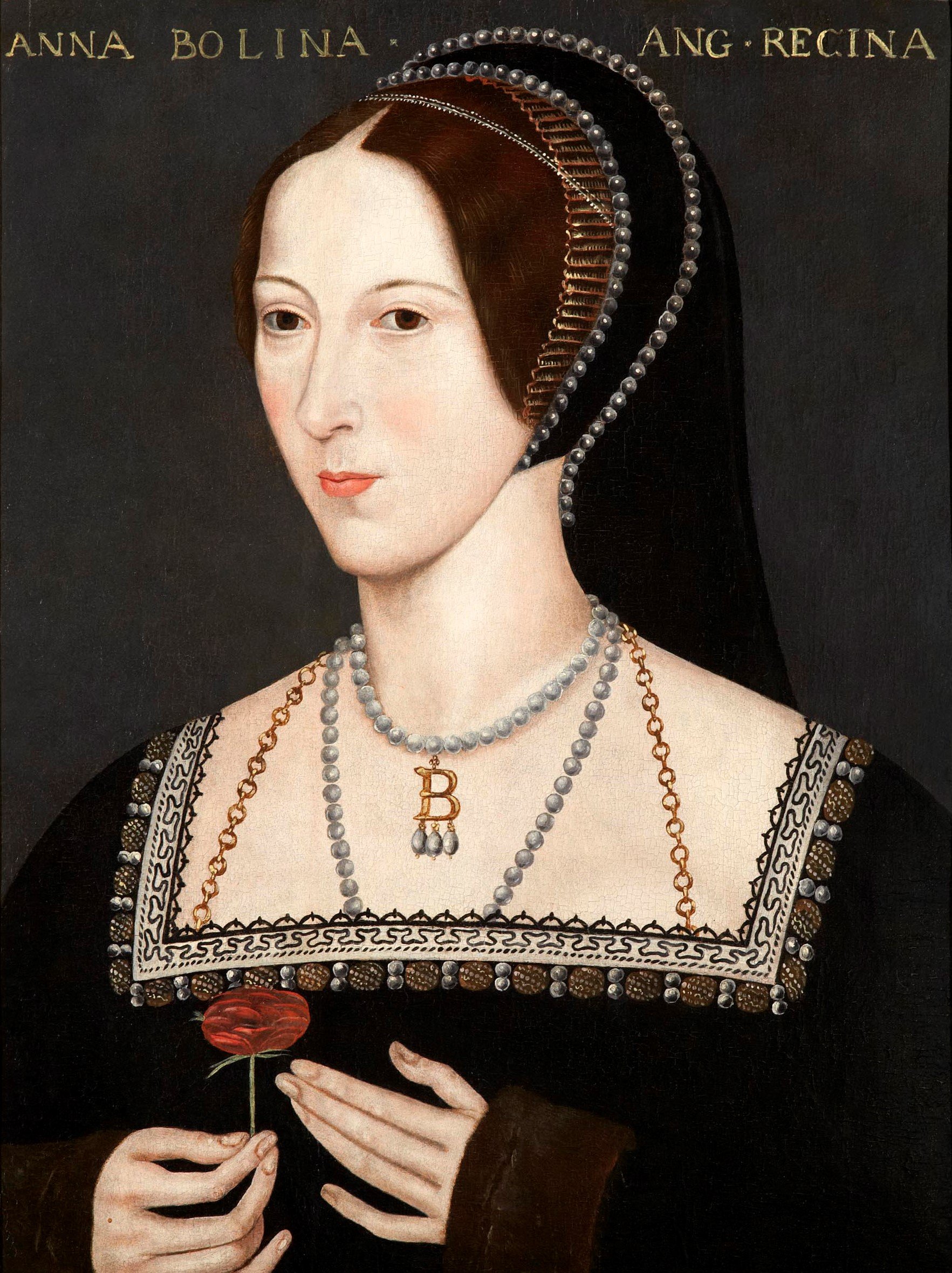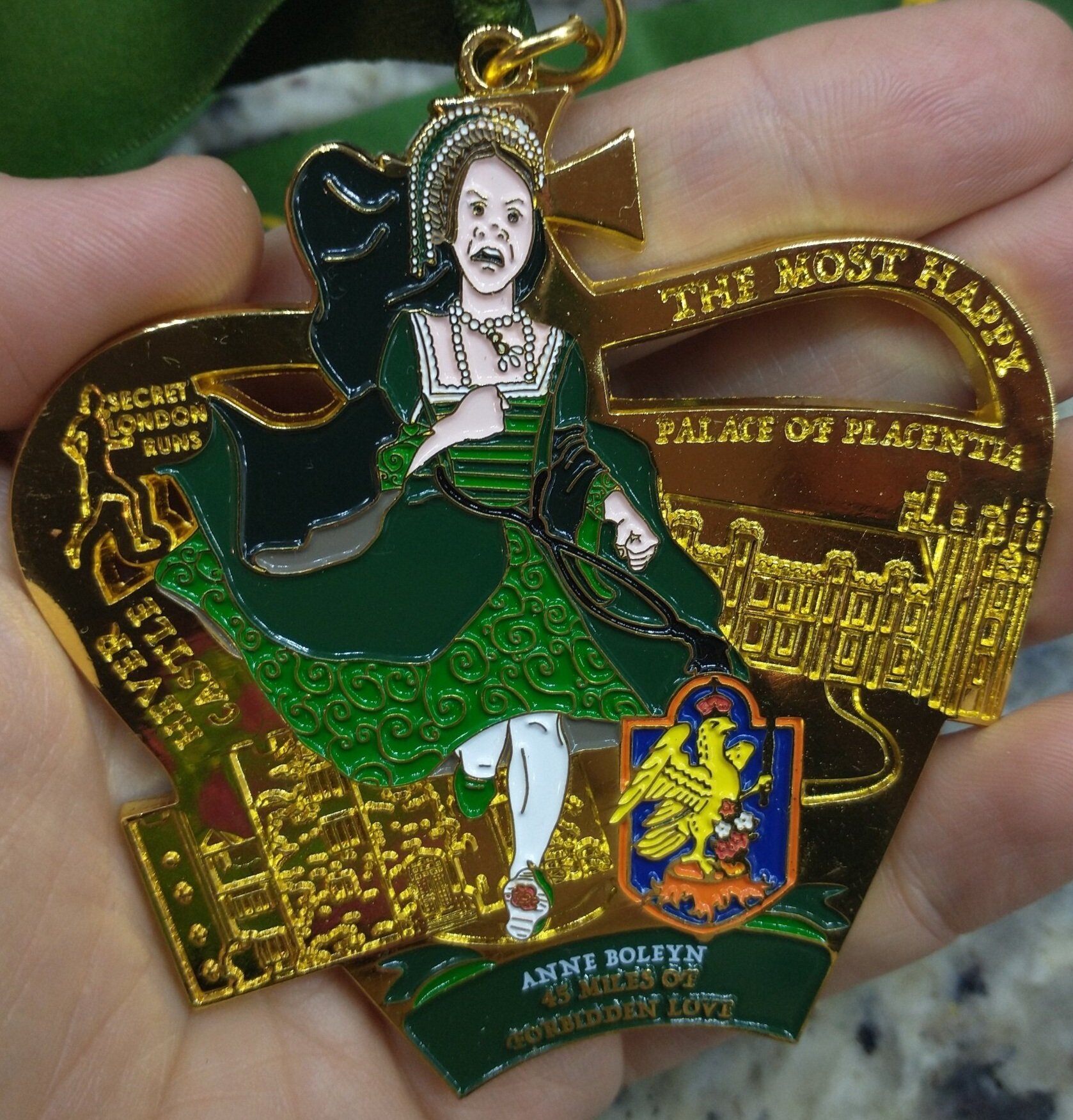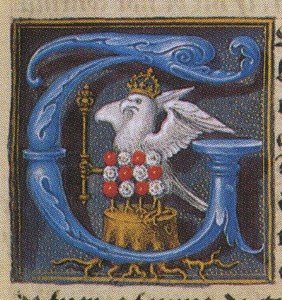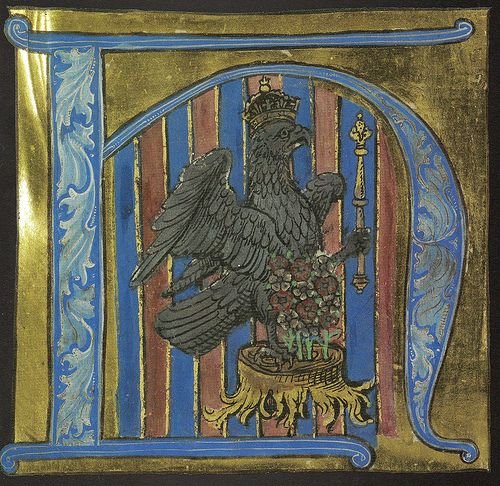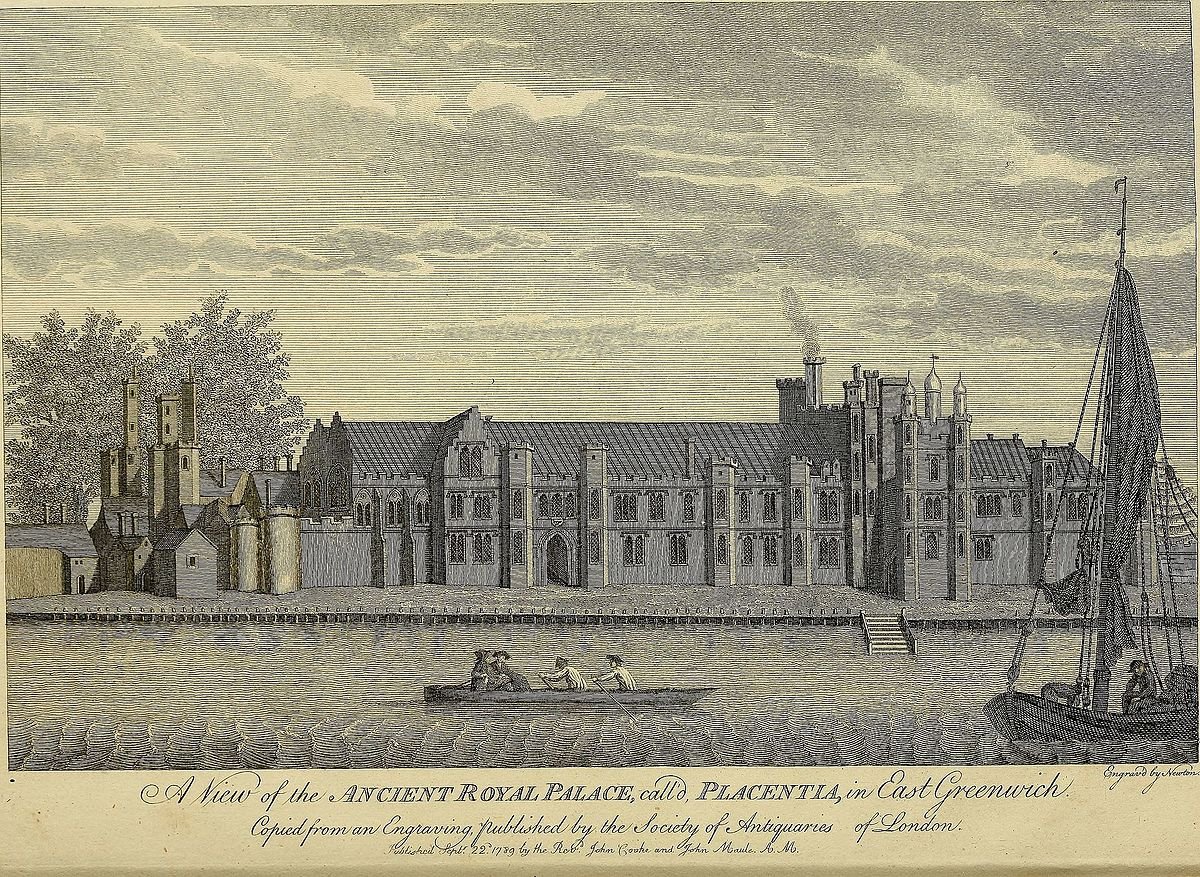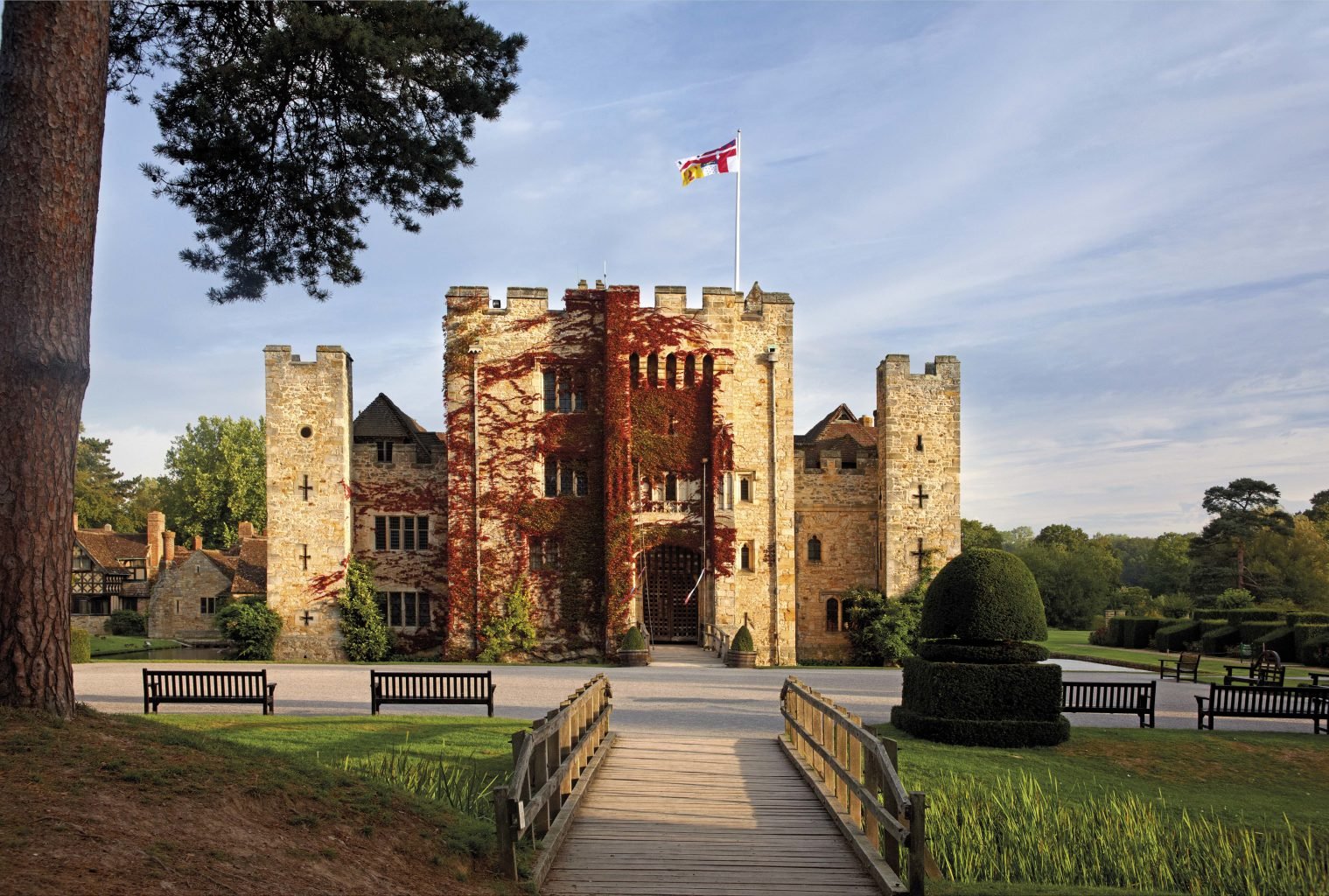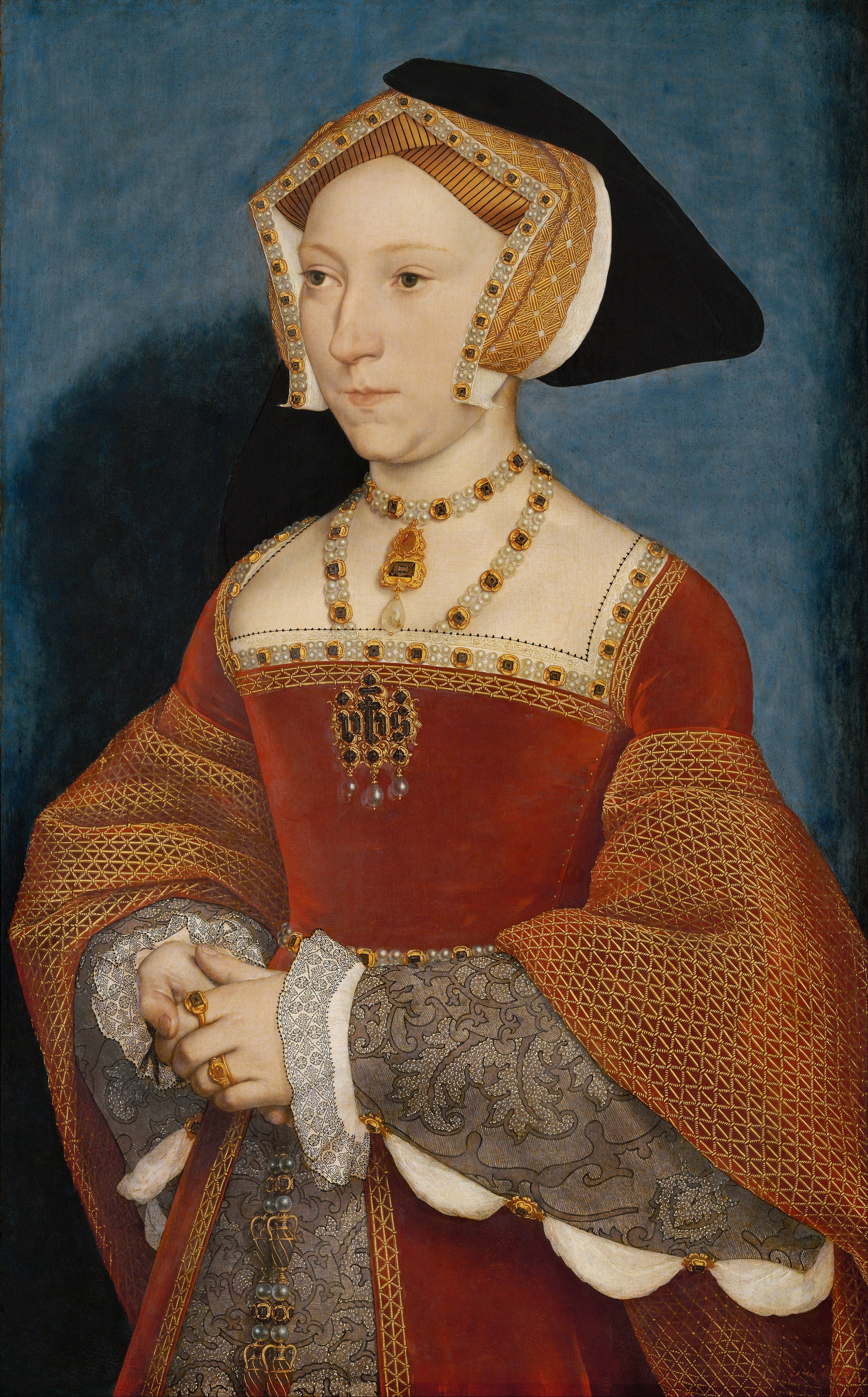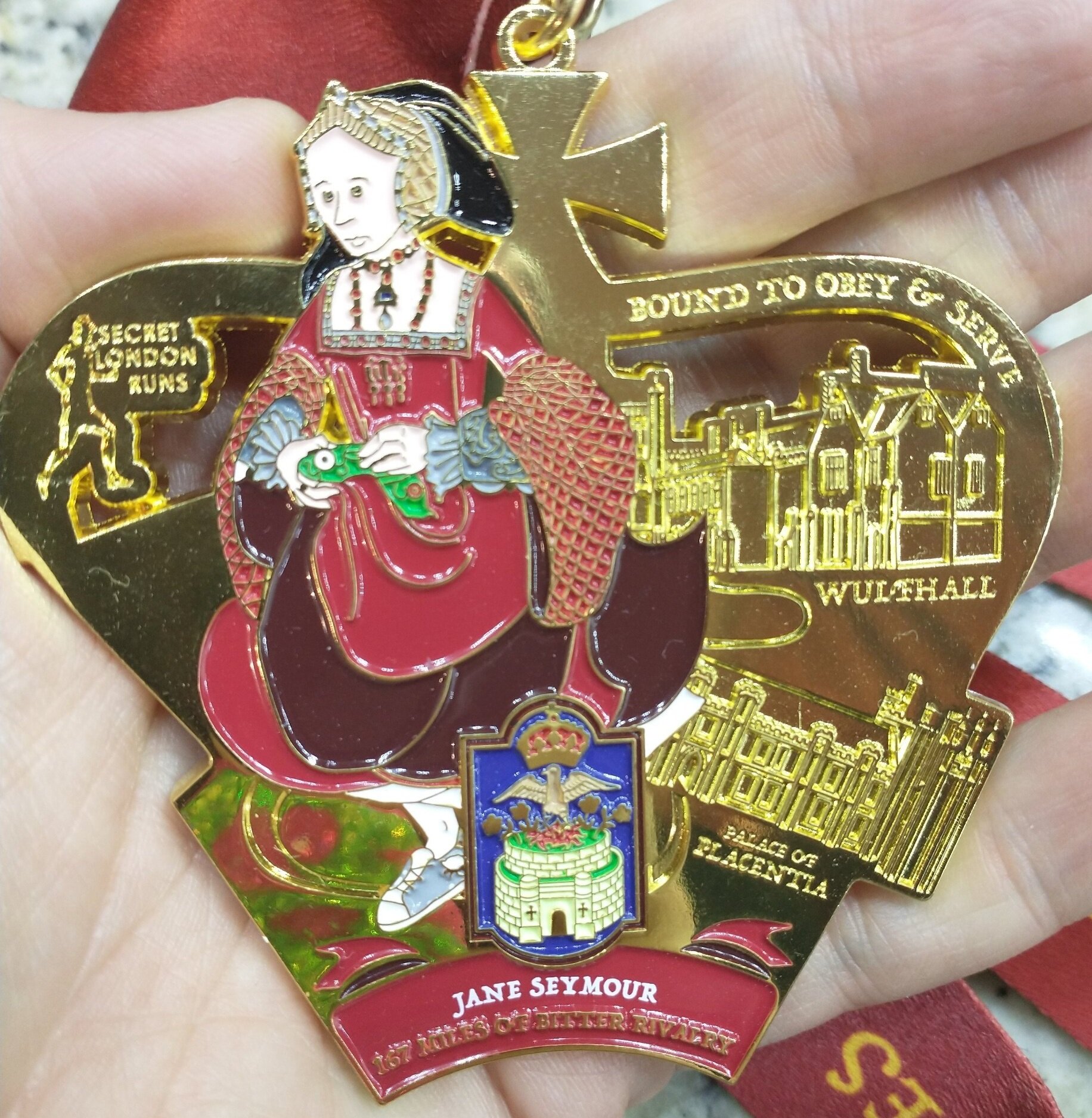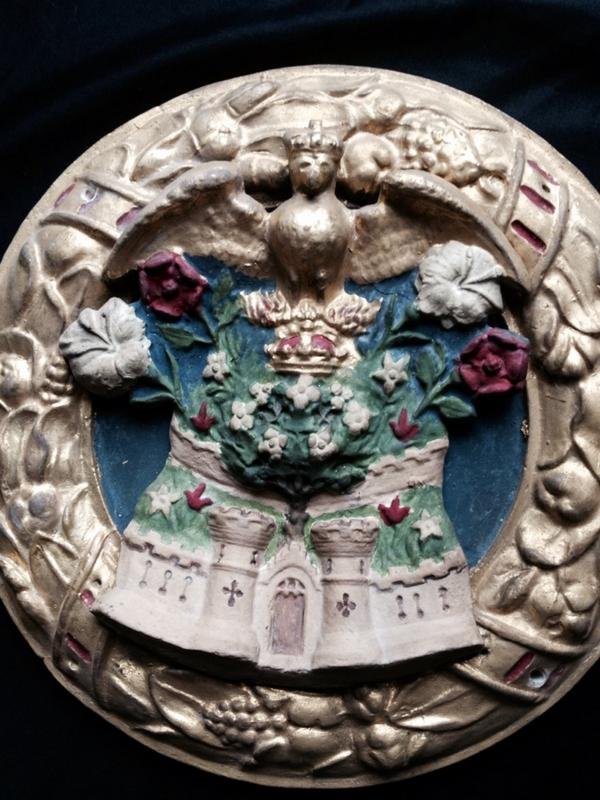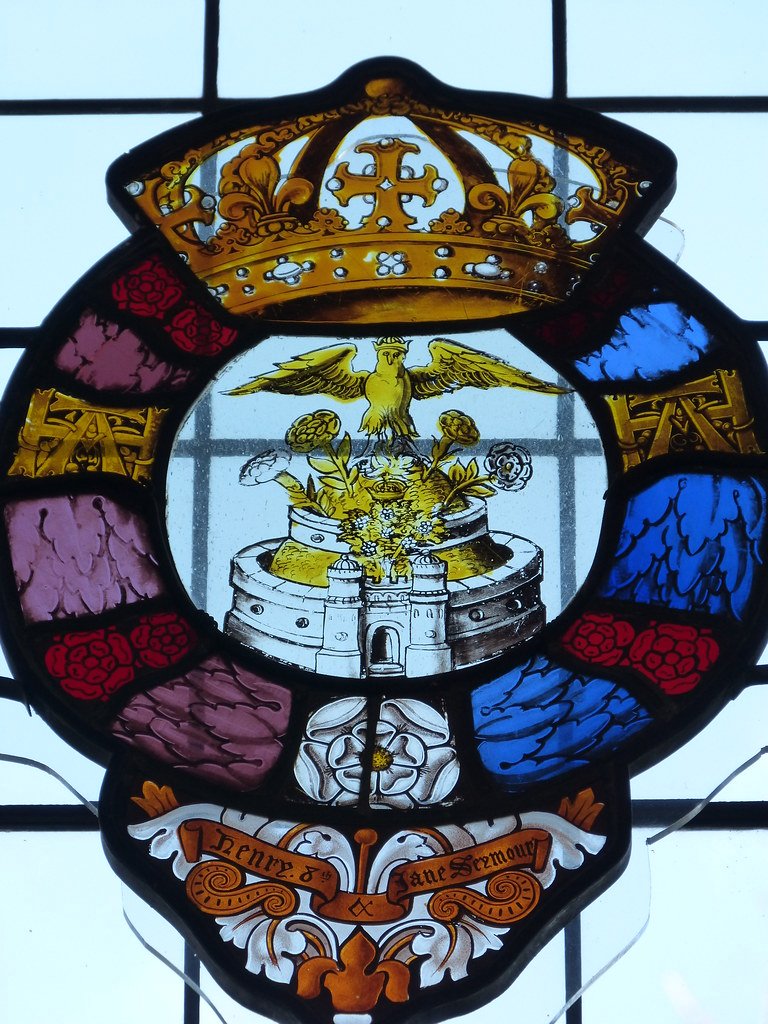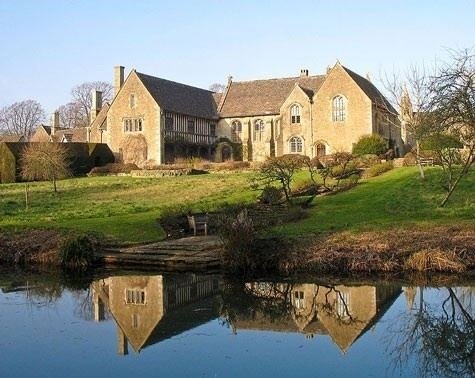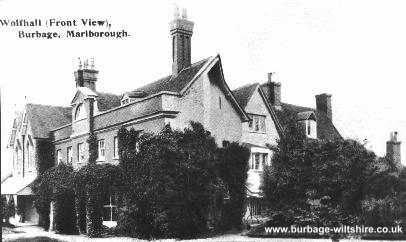Historical References in Secret London Runs' Six Queens Run Series Medals
If you’re active in Tudor History groups or follow Tudor historians online, you may have seen a lot of us posting about Secret London Runs’ Henry VIII’s Wives virtual mileage challenges! These virtual “races,” which track your progress via fitness tracker and an app on your phone, send you on a historical journey between places that played important roles in each woman’s life. Throughout the journey, as you hit milestones, you get digital postcards from the queen telling you what they did there and what was going on in their life then (you also get a few podcast episodes, but I’ll admit that I haven’t listened to any of those, as I’ve been burned out on podcasts most of this year. Someday I’ll listen to them!). It’s a pretty brilliant concept, and I signed up for the full Six Wives challenge ages ago, back in March I think.
If you live outside the UK and sign up for all six races, the company sends you all six race medals at once. These are individually wrapped and labeled so you know exactly which one to open as you complete each race. The medals are designed to fit together in a circle, and once you’re done with them all, you get a finisher badge that fills in the center.
The medals you get as a reward for finishing up each race are packed full of historical meaning and references, and I thought I’d take a look at the ones I have so far. I’ll add these in as I go; the Anna of Cleves race is VERY LONG and is taking me quite a while to go through.
Catherine of Aragon: 99 Miles of Dismissal
Catherine of Aragon’s race follows her historical journey from The More to Kimbolton Castle, as Henry VIII banished her further and further away from the royal court, placing her into shabbier and shabbier living conditions. This covers events that took place from late 1532 (when Henry moved Catherine to The More) to Jan. 7, 1536, when Catherine died at Kimbolton Castle at the age of 50.
Outfit: The medal features Catherine wearing the dress and jewelry from her most famous portrait. We don’t know exactly which year this portrait was painted, or who the artist was, but it’s clearly of Katherine in her later years, particularly when compared to earlier portraits of her as a teenager or a child.
The undergarments, running tights, and shoes are all obviously anachronistic. I’m not an underwear expert, but my understanding is that Tudor women’s underwear consisted primarily of a smock, and perhaps split drawers or long hose in winter. Fabrics of the time just would not have given you a close enough fit for these sorts of running tights. The lacy cuff on the bloomers also looks wrong for the era. And sneakers like that weren’t invented until 1830s! I do enjoy the rose on the sneakers though!
Badge: The medal includes a small recreation of Catherine’s famous pomegranate badge, along with her motto, “Humble & Loyal.” The pomegranate was a powerful symbol of regeneration and fertility dating back to the Greek myth of Persephone, the Goddess of Spring. Catherine’s particular use of it dated back to her parents Ferdinand and Isabella’s conquest of Granada in 1492 (“granada” is Spanish for pomegranate). This victory by the Catholic monarchs of Spain over the Moors was so celebrated that the pomegranate was added into the royal arms of Spain.
Pictures of the pomegranate can be found alongside the Tudor Rose in numerous documents issued under Henry VIII’s authority during his marriage to Catherine and in works dedicated to the couple.
The medal also hangs on a burgundy ribbon which matches the pomegranate motif.
Buildings: The buildings at the start (Kimbolton Castle) and the end of the race (Manor of the More) are both reproduced on the medal. Kimbolton Castle was rebuilt in the 1600s-1700s so this isn’t actually what it looked like when Catherine lived there; only a few sections of the Tudor era building remain.
The More was abandoned after 1556 and demolished later in the 1500s and nothing remains of it now, so it looks like the designers based their drawing on a recreation by Michael Athanson, which was originally published on the Three Rivers Museum Trust Blog.
Anne Boleyn: 45 Miles of Forbidden Love
Anne Boleyn’s 45 Miles of Forbidden Love follows her historical journey from Palace of Placentia to Hever Castle. I love this one as, as it follows a time in Anne’s life that isn’t usually featured in pop culture or books. In 1523, Anne entered into a secret relationship with Henry Percy, the son of the Earl of Northumberland, against his father’s wishes. It’s possible that they exchanged vows to marry in the future in a pre-contract, as this came up several times later (Henry Percy’s wife Mary Talbot brought up the pre-contract in an attempt to annul their marriage in 1532 and Thomas Cromwell brought it up again in May 1536 as a possible reason for annulling the king’s marriage to Anne). When their relationship was discovered, the powerful Cardinal Wolsey intervened and Anne’s family sent her home to Hever Castle, away from the royal court. Anne eventually came back to court, but we aren’t sure when; probably at least by Spring 1526, as this is when Henry VIII’s traditional interest in Anne began.
Clothing: The neckline and basic design of Medal Anne’s dress, hood, hair, and jewelry are the same as two of her most popular historical portraits (seen in paintings held at Hever Castle and at the National Portrait Gallery). However, since Henry VIII had the portraits and memorabilia of Anne destroyed after her execution, this portrait may actually have been painted long after her death, during her daughter Elizabeth’s death, and we really don’t know how much it actually resembled the real life Anne.
Her dress on the medal is green, probably in tribute to the common myth that Henry VIII wrote Greensleeves about Anne. For the record, he didn’t. Greensleeves is based off of a romanesca, an Italian style of musical composition that did not reach England until after Henry VIII's death. But it’s a fun story and people like referencing it even if it isn’t true. Plus it probably added some variety to the overall look of the 6 medals all together.
The medal hangs on a green ribbon that matches Anne’s dress.
Badge: Anne’s falcon badge is recreated on her medal, along with her motto, “The Most Happy.” The falcon symbol originally came from the crests of the Butlers, the earls of Olmonde. Anne was actually originally brought back from her time at the court in France to marry a cousin and resolve a dispute over the Ormond inheritance; that marriage obviously didn’t go through, but Henry VIII eventually forced the other claimant to give up the earldom of Ormond and give it to Anne’s father Thomas. The falcon was officially made Anne’s badge when she married Henry in 1533.
Fun fact: There’s a delightful surviving bit of embroidery from Anne Boleyn’s mother Elizabeth dating from ~1530 that features Anne’s falcon badge attacking Catherine of Aragon’s pomegranate badge. This is a pretty amazing discovery, since so much of Anne’s legacy was destroyed after her execution. It also features the Latin motto “Ainsi sera, groinge qui groinge,” which Anne used for a short time in 1530; this translates to "that’s the way its going to be, however much people grumble” (essentially the Tudor way of saying “haters gonna hate”).
Buildings: The palace of Placentia was originally built in 1443 and rebuilt by Henry VII in 1500. It was demolished in 1660, but it appears that this rendition of it was based on drawings of the palace from the Tudor era.
Hever Castle was the Boleyn family’s seat of power dating back to the 1400s, with parts of the castle dating back to 1270. Anne lived at Hever until she joined the court of Archduchess Margaret of Austria in 1513. After the execution of Anne and George Boleyn in 1536, their father Thomas Boleyn somehow kept a hold of his life and his castle for several more years; after he died in 1539, Hever became Henry VIII’s property. It later was given to Anne of Cleves as part of her settlement in 1540.
Jane Seymour: 167 Miles of Bitter Rivalry
This race follows Jane Seymour from her family’s home in Wulfhallon the Royal Progress of 1535 to Windsor and then back to Greenwich. We don’t know for sure that Jane was on this trip, but since she served Anne Boleyn as a maid of honor, it’s pretty likely. We don’t actually know when Henry VIII started courting Jane. We know that she had already been at court for years, arriving sometime in the late 1520s/early 1530s and serving both Catherine of Aragon and Anne Boleyn. The first reported instance of Henry and Jane’s relationship dates back to February 1536, when Imperial Ambassador and professional gossip Eustace Chapuys reported that Henry sent presents to Jane. In April of that year, he sent Jane a purse of money and a letter; she rather famously refused both and instead begged the messenger to tell the King that she valued her honor more than any treasure and if the king wanted to give her money, she asked him to do so when she was married. While Anne was imprisoned in the Tower of London, Henry put Jane up in a house close to his own lodgings at the time, where she was treated like a very grand lady. Henry and Jane were betrothed on May 20, 1535 (the day after Anne Boleyn’s execution) and were married on May 30.
Clothing: In the medal, Jane is wearing the exact outfit and jewelry she wore in her historical portrait. We actually know when this painting was painted and who painted it! It’s by Hans Holbein the Younger and was painted in 1536, the year of Jane’s marriage to Henry. Her outfit, hood, and jewelry are faithfully recreated in the medal, down to the positioning of her arms. In the medal, however, she is holding a green handkerchief which isn’t present in any of her portraits. It’s interestingly of the same color as Anne Boleyn’s dress, and may possibly be a link between the two queens.
Badge: A crowned phoenix rising from the fire on top of a castle, with red and white roses surrounding it. Her Motto is also featured on the medal, “Bound to Obey and Serve.”
I couldn’t find any information on the origin of the phoenix and other symbolism in Jane’s badge, but we can guess at a few things. Since Jane rose to her position as queen in the wake of Anne Boleyn’s fall and destruction, she and/or Henry may have seen a parallel in the story of the phoenix, which is famously reborn from the ashes. This also may allude to the Tudor legacy being reborn from the ashes of the Wars of the Roses, since the red rose of Lancaster and white rose of York are both prominently featured in the badge as well; Henry VIII was keenly aware of his legacy and need to have a Tudor heir, and probably saw Jane as his second or third chance at continuing the dynasty.
Buildings: As I noted in Anne Boleyn’s entry, the palace of Placentia was originally built in 1443 and rebuilt by Henry VII in 1500. It was demolished in 1660, but it appears that this rendition of it was based on drawings of the palace from the Tudor era.
The Wulfhall Jane Seymour knew dated back to 1491 (when her father became Lord of the Manor), but was extensively remodeled and upgraded in the early 1530s by the Seymour family. Henry VIII stayed there for a week during the royal progress of 1535. Alas, when Jane’s brother Edward Seymour fell from power and was executed in 1552, his son was unable to keep up the place, and it fell apart over the years. As of 1571, it was derelict. Although there are some remaining bits of the building that date back the 1550s, they’re really only fragments. An expert on the house (archival historian Graham Bathe) estimates that the surviving building today probably only occupies about 5-10% of the footprint of the original manor house. (More info over at The Tudor Travel Guide). It appears that the medal’s rendition of wulfhall is based on current pictures of the house, which date only to the 1700s or so. Given that we don’t have any contemporary descriptions, drawings, or plans, of what Wulfhall looked like then, this seems like a pretty good compromise.
I’ll be back when I’m finished with Anne of Cleves’ race (363 miles to wedded bliss) to add her info in! I’ve been working on this since…July, and am finally over the 300 mile mark, so i only have about 40 miles left to go. Did I mention that you have the option of doing this race with a friend because it’s so long?
After that, of course, I’ll come back and add in Katherine Howard’s and Catherine Parr’s races as well. :)
Other English History Posts:
An Abundance of Tudor Katherines/Catherines/Kateryns
My Favorite Thomases: A Review of and Often Arbitrary Ranking of Tudor Thomases
Six the Musical Historical Costume References: Queens 1-3 ; Queens 4-6 (I have like 20 posts about Six alone, y’all)
Henry VIII’s Jousting Accident Probably Didn’t Change his Personality
Shakespeare English History Plays Family Tree
Historical Inspirations in Game of Thrones

